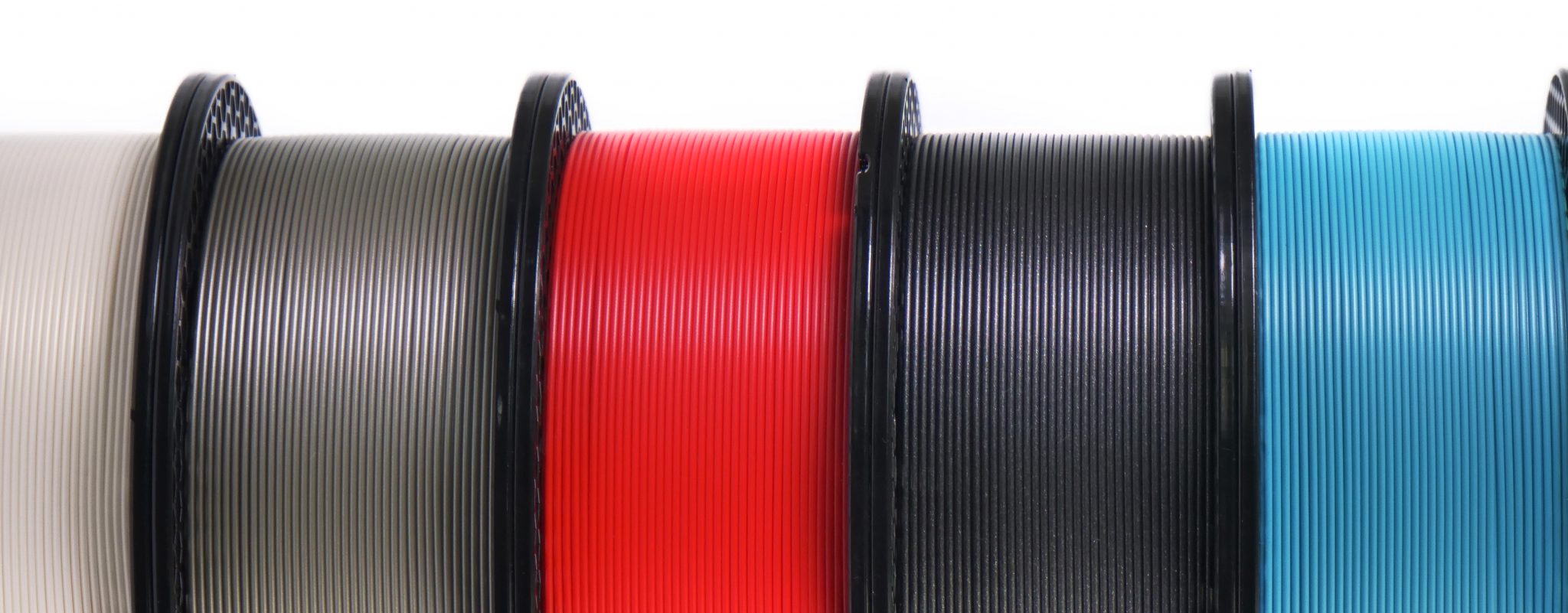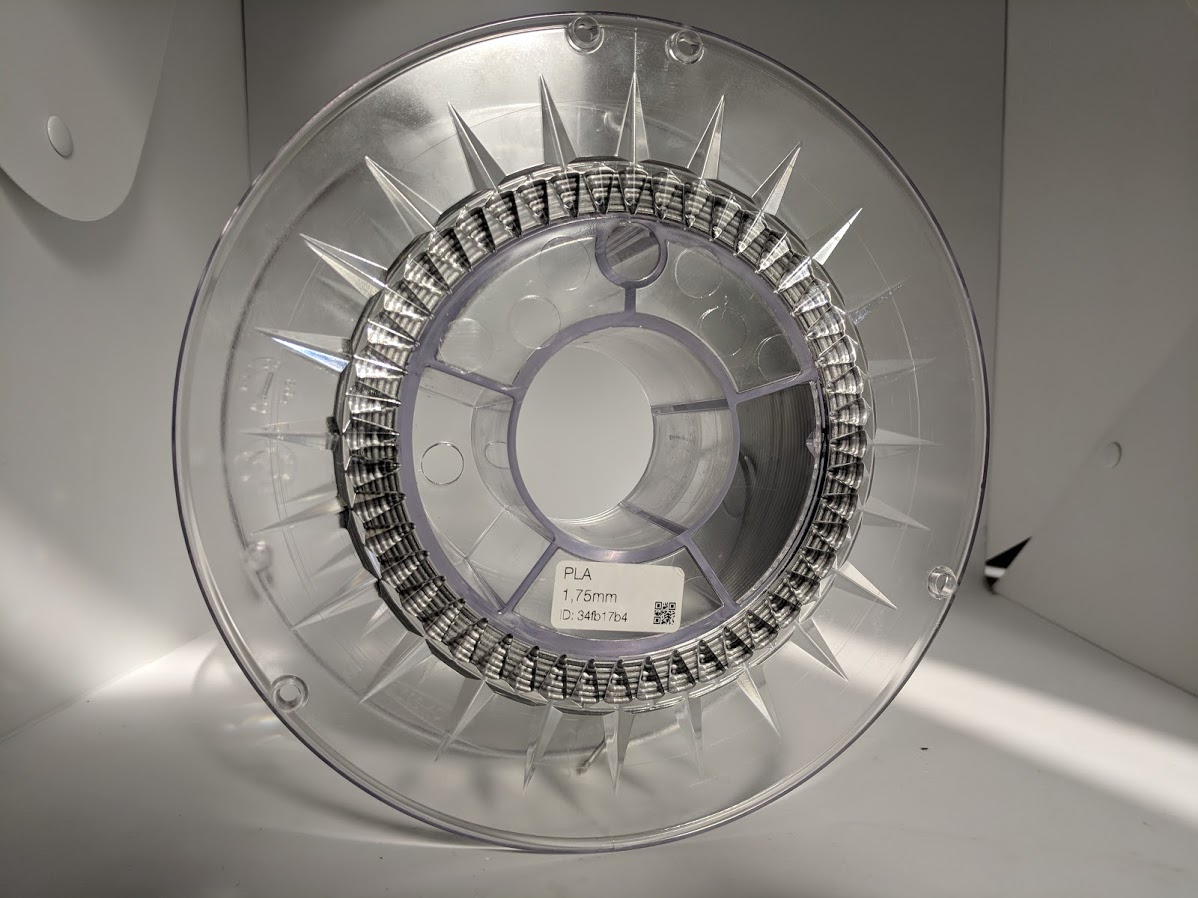Prusa Research, an award-winning manufacturer of open-source 3D printers, has unveiled its brand of in-house filament known as Prusament.
3D Printing Industry took an early look at the filament ahead of its official launch.
Headquartered in Prague, Czech Republic, Prusa Research develops 3D printing hardware, electronics, software, and firmware; With the intention of gaining full control on final print quality, the company has manufactured high-quality PLA filament with diameter and color consistency, ±0.02mm precision, and spool traceability.
“We are the only 3D printer manufacturer with in-house filament production because we feel that it’s time to stop the bullshit specs that you can see pretty much everywhere, and step up the game,” stated Josef Prusa, CEO and Founder of Prusa Research.

Developing the Prusament filament range
Unsatisfied with the quality of affordable filament available on the 3D printing market, Prusa and his team of over 40 professionals began building a filament factory to develop and perfect their own range of materials. The team started testing its Multi Material Upgrade v1 and found that it was difficult to achieve a consistent diameter as well as prevent lumps.
According to Prusa, filament quality can be determined by its physical measurements (such as diameter precision and ovality), consistency of color and materials proprieties, printing properties, and the quality of care in manufacturing, which includes winding capabilities for tangle-free unspooling.
Several industry standard filaments maintain diameters from 1.70 mm and 1.80 mm with ±50 µm resolution. Prusa believes that this can lead to major problems regarding the printed object’s quality. “Our system will not allow any spool to be packed and shipped even if there’s only a single spot that is not within the 20 µm tolerance.”
“Some manufacturers care so little about the diameter consistency. We went a little further and we collect all the diameter measurements (more than 4700× per second) in our database together with all the extrusion line parameters. Therefore, our manufacturing process allows us to guarantee the state-of-the-art precision of ±20 µm or better on every spool.”
3D Printing Industry had the chance to test Prusament silver PLA. This material was able to successfully print the intricate 3D models seen below.

Prusament spool traceability
Prusament filaments spools can also be traced using an original QR scan code. This unique feature allows its users to fully inspect parameters, including weight, length, Basic diameter, maximum deviation, and ovality of their chosen filament spool. This feature can also calculate how many meters/feet are remaining on a user’s spool by entering its the weight in kg/lbs.
“We are so confident about our quality, that each spool displays a webpage containing the full individual report of manufacturing specifications with a graph and data analysis,” Prusa explained.
When Prusament begins to ship, packaging will be updated. The roll we used did feature a QR code for tracking, but is not the final design.

Filament color tone monitoring
Addressing the common hurdle of color inconsistencies within FDM 3D printing, Prusa and his team have diligently created a process to monitor pigmentation. This is done by sourcing concentrated pigment and additives (masterbatches) exclusively from reliable European companies.
Furthermore, an online monitoring system was created, based on the CIELAB spectrum, a color differentiation model specified by the International Commission on Illumination. This system observes the color tones of filaments and automatically rejects spools that are not within its specifications.
In addition, the Prusament line has undergone tensile strength, impact strength, melt flow index tests and a test to evaluate water absorption as well as mechanical properties.
Prusament filament pricing
Prusa Research has shipped unlabelled Prusament Silver PLA with a select few of its upgraded MK3 printers, which has reportedly received positive feedback. Currently, the company is selling PLA spools in black, red, silver and blue, with intentions to expand the color range The range is also expected to include PETG and ASA in the near future.
Prusament filaments are available for purchase on its e-shop from £22.99 and is expected to be available on Amazon next month.
Keep up with exclusive interviews and the latest 3D printing news by subscribing to the 3D Printing Industry newsletter. Also, follow us on Twitter, and like us on Facebook.
Searching for new talent or seeking a career change? Search and post 3D Printing Jobs for opportunities and new talent across engineering, marketing, sales and more.
Featured image shows 3D prints using unlabeled Prusament Silver PLA. Photo by Michael Petch.

